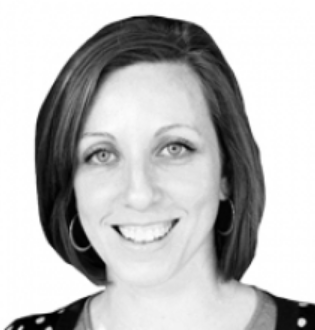A predictive analytics tool uses EMR data to trend whether patients are getting better or worse by using more than 30 different variables, such as cardiac rhythms, labs, vital signs, nursing assessments, and shift data.
Back in October, we saw a vividly frightening example of how EHRs are no substitute for nurse-physician communication, when nursing notes entered into the medical record for an Ebola patient were either overlooked or ignored.
Relying too much on technology certainly can be dangerous, but Virginia-based Riverside Health System is showing that technology can also be powerful when it's combined with interdisciplinary care.
For the past year, Riverside has been using a predictive tool from PeraHealth that uses EMR data to trend a patient's condition over time, using more than 30 different variables, such as cardiac rhythms, labs, vital signs, mental status, fall risk, and pressure sore risk. The data automatically flows into the tool from EMRs, requiring no additional input, and a score is calculated with each data point.
"Anytime there's new information that flows in, it creates the calculation," Susan Tanner, MSN, RN-BC, Riverside's System Director Clinical Informatics, says of the tool.
Tanner says a challenge of EMRs is their disparate data fields. For instance, nursing assessments aren't necessarily presented with labs. Also, looking at individual nursing assessments at individual points in time doesn't tell you much.
The predictive tool combines several variables over time to trend whether the patient is getting better or worse.
The most heavily weighted of those variables are nursing assessments and shift data, Tanner says, and watching those trends could allow caregivers to find subtle changes in conditions that may otherwise be missed.
"The research has demonstrated that nursing assessments are very early indicators of patient decline," she says. "It could create a system where we could be proactive in our intervention."
Tanner says it will take several years of data before Riverside will be able to perform a deep analysis of how well the predictive tool works in terms of finances and patient outcomes, but already, she believes, "it's been a worthwhile investment." That's because of what she calls their "catches."
These "catches" are individual patients that caregivers were able to help because of the early predictive indicators. For instance, when an elderly woman's son was concerned that his mother wasn't ready to be discharged from the hospital, he contacted her care manager who took a closer look at the patient's trend scores and noticed a subtle decline.
"It opened up a discussion, it opened up additional investigation," Tanner says, and it also delayed the patient's discharge until she was really ready for it.
In another instance, a nurse noticed that a patient seemed less alert during rounding, so the nurse took a look at the patient's trend and saw a significant decline. That prompted the provider to order studies, which showed that the patient had pleural effusion which hadn't yet been picked up on, Tanner says.
The data is visible in all nursing systems throughout the health system, and the link to trend data is available in EMR. It's also visible on large kiosk monitors throughout units. A large TV shows an anonymized, color-coded graph for all of the patients on a unit, allowing nurses to instantly see where the sickest patients are, and helping caregivers to prioritize their rounding.
Patients and families can see it, too.
"In the spirit of transparency, we do have it visually displayed," Tanner says, adding that caregivers could share the trend data with patients and family, which could be especially useful in discussing transitions of care.
"It is something that you could share with the patients and families… and help support the appropriate transition of the patient," she says. "It could be used as a way to communicate."
The data is not only used to improve communication with patients and families. Tanner hopes it is also improving communication among caregivers. The patient trends data is part of the discussion during daily interdisciplinary rounding; during shift hand-offs; and prior to discharge.
So far, nurses have been strongly onboard with using the new tool.
"The implementation and optimization has been nurse-led, nurse-driven," she says. "The challenge really is not with our nurses, our challenge has been the physician adoption piece."
Ultimately, as with all technologies, adoption will depend on whether it becomes routine for everyone to use it.
"We really are trying to hardwire this into our culture," Tanner says. "I'm extremely passionate about this technology."
Alexandra Wilson Pecci is an editor for HealthLeaders.

